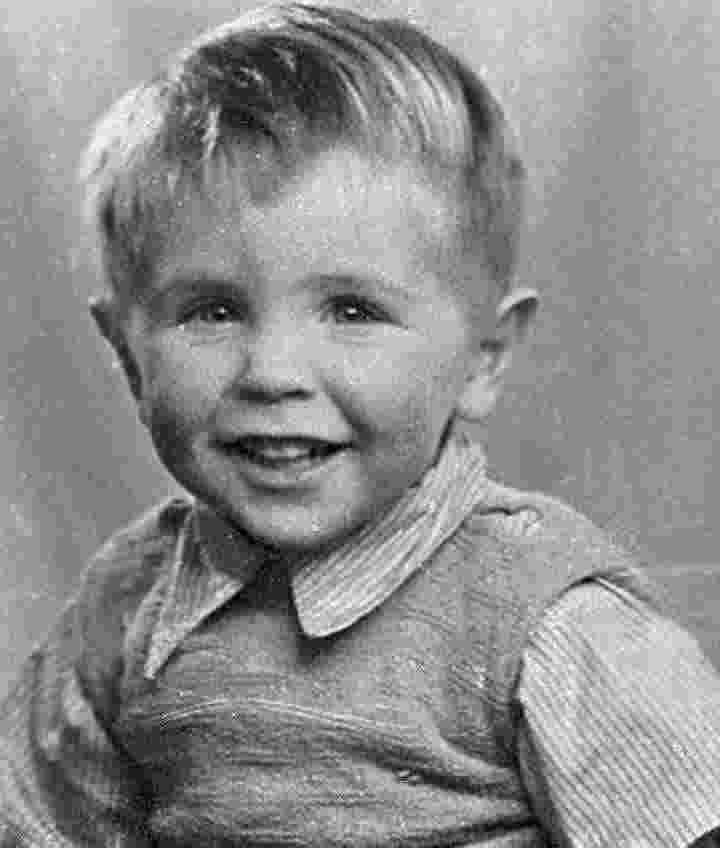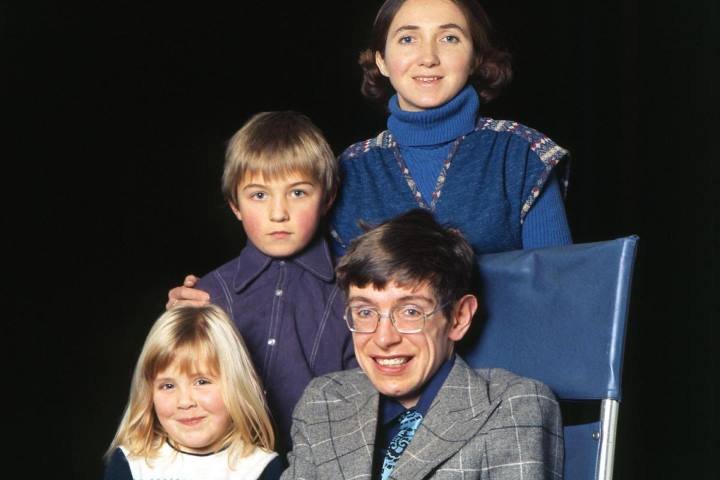What would you do if you were told at age 20 that you have a motor neurone disease (ALS) and you survive just a few more years? This is what happened to Steven Hawking in 1963. But he survived many years later and for a half-century he created a revolution in physics. Steven Hawking was an individual inspired, because he changed our understanding of the world. He is known for his pioneering work on black holes and the theory of relativity, and has succeeded in increasing the popularity of science, and his acceptance of his best-selling book, "A Short History of Time," is witnessing this claim. If we only say that his life and works have been successful, we have not given the right to do so. Because Steven Hawking's extraordinary life and achievements make him a special and influential person who taught us many lessons and always been inspirational. In this article, we review the personal life and works of Steven Hawking, and express the lessons we learn from him.
Steven Hawking's personal life
Steven Hawking, who was
Steven William Hawking was born in Oxford, England, on January 8, 1942, on the thirtieth anniversary of Galileo's death. He was a British scientist, a professor and writer who made groundbreaking work in physics and cosmology, and his books made the science accessible to everyone. At age 21, she studied amyotrophic lateral sclerosis (ALS) while studying cosmology at the University of Cambridge. Part of her story is depicted in a 2014 The Theory of Everything film.
The Steven Hawking Family and the First Years of Life

Steven Hawking was the largest child among four Frank and Isabelle Hawking children. He was born in an educated family. His Scottish mother came to Oxford University in the 1930s, when very few women could enter college. His father also graduated from Oxford University, a well-known medical researcher specializing in tropical diseases.
Steven Hawking was born in bad times and his parents did not have a good financial situation. The political conditions were tense at that time as England was involved in the Second World War and was faced with devastating attacks on German bombs. Isabel returned to Oxford to find the safest place to give birth to the first child of the family. The Hawking family owned two other children, Mary (1943) and Philippe (1947), and in 1956 their second son, Edward, was admitted.
According to one of their close family friends, Hawking's family were strange people. Usually they dined in silence, while each family member was busy studying a book. The family car was an old London taxi and their home in St. Albans, a 3-story house that needed repairs and was never fully repaired. Hawking's family were kept in the basement of the bee house and they produced fireworks in the greenhouse.
In 1950, Steven Hawking's father accepted the department of parasitology at the National Institute of Medical Research and spent the winter months in Africa. She wanted her daughter to study in medicine, but Steven Hawking showed a strong interest in science and the sky at an early age. This was evident for her mother, who often went to the courtyard with her children to look at the stars in the summer nights. His mother said: "Steven was always amazed by the stars, and I was seeing how the stars drew him."
Steven Hawking was always on his knees. He loved climbing and, along with his sister, Mary, had invented various entry routes into the house. He was in love with dancing and was interested in sailing, and he was a boatman at the college sailing team.
Steven Hawking's wife and children

Steven Hawking met with a young language student at the New Year's party in 1963, shortly before the ALS disease was detected, for her younger student, Jane Wilde. They married in 1965. In 1967, the couple owned a boy named Robert and gave birth to a daughter Lucy in 1970. His third child, Timothy, was born in 1979.
In 1990, Steven Hawking separated from his wife Jane for one of her nurses Elaine Mason. They married in 1995. The marriage damaged the relationship between Steven Hawking and her children, and her children claimed that Eline had taken her father out of them. In 2003, nurses caring for Steven Hawking reported to the police that Ellen was physically abusing her husband. But Steven Hawking rejected the charge, and police investigations were canceled. In 2006, Steven Hawking separated from Ellen Mason.
In the following years, this physicist became closer to his family. He reconciled with Jane, who had just remarried, and, along with her daughter Lucy, published five novels with scientific themes for children.
Steven Hawking's Education
She was a smart child in her early life, but she was not an exceptional student. In his first year at the St. Albans School, his class was the third most recent. But she focused on things outside school. He loved playing on the board (games like hack and chess), and invented new games along with several of his close friends. In his teenage years, he and his friends, computerized computing parts, worked out simple and simple mathematical equations.
Steven Hawking at the age of 17 entered Oxford University College. Although he was interested in studying mathematics, he did not focus on the field of physics, especially the field of cosmology, because Oxford University did not provide evidence in this field.
According to herself, Steven Hawking did not spend much time studying. He later calculated that he spent an average of one hour a day studying college lessons. Of course, more time should not be left out. He graduated with a high degree in natural sciences in 1962 and then moved to Trinity Hall, Cambridge, to become a Ph.D. in Cosmology.
Steven Hawking became a member of the University of Cambridge Astronomy Institute in 1968. A few years later, it was a good time for Steven Hawking and his research. In 1973, he published his first specialized book, The Large Scale Structure of Space-Time, with G.F. R. Ellis.
Steven Hawking returned to Cambridge in 1979, where he earned one of the most famous lectures - Professor Lucas, a mathematician who returned to 1663.
Disable Internet
In October 2017, the Cambridge University published its Ph.D. Steven Hawking PhD in 1965 entitled "Properties of Expanding Universes" on its website. The strong demand for immediate access to the dissertation resulted in the University's server being dropped, although the dissertation reached a surprising number of 60,000 hits before the end of its first day of online display, despite the failure of servers.
Steven Hawking's Disease
Steven Hawking's disease was diagnosed with amyotrophic lateral sclerosis (ALS or Lou Gehrig disease) at age 21. In plain language, the nerves that control the muscles of the body gradually cease to function. At that time, the doctors told her that only two and a half years would survive
Steven Hawking once noticed his physical problems that he was studying at Oxford University (he sometimes stumbled and fell, or had difficulty speaking). But he did not pursue these problems until 1963, when he spent his first year at the University of Cambridge. In most cases, Steven Hawking kept these signs up and did not show up. But when his father noticed his physical condition, he took him to the doctor. For the next 2 weeks, a 21st-year college student went to a medical clinic and a series of medical tests were conducted on her.
"They took a muscle sample from the arm, they attached me electrodes and injecting the radio-opaque fluid into my spinal cord, and while tilting the bed, the fluid was raised and lowered with They watched X rays. After all these things, they did not tell me what I had and only said that my problem is not multiple sclerosis and I am an atypical case. "
Of course, in the end, doctors found that Steven Hawking was in the early stages of the ALS disease. The disease was a devastating event for him and his family, but several things prevented his complete disappointment. The first time he was hospitalized. He was at the hospital with a boy with leukemia. Steven Hawking later came to the conclusion that his condition is more palatable than that of his cattle. Steven Hawking had a dream shortly after being discharged from the hospital and wanted to do it. He said that the dream made him realize that there are still things to do in his life.
In fact the disease we know Steven Havyng helped him to become a prominent scientist. Prior to diagnosis, he was not always focused on his studies. "Before I understood my condition, I was tired of life a lot," he said.
As his physical control fell on his body (he was forced to use wheelchairs in 1969), the effects of the disease would slow down. But over time, the steady progress of Steven Hawking's rise to physical conditions was getting worse. In the early 1970s, the Steven Hawking family asked a graduate student to take care of her. He could still eat and get out of bed, but needed help with other things. Moreover, his conversation would have become more or less meaningless, as only those who knew him well understood his words. He lost his voice in 1985 after a tracheotomy (tracheotomy). The conditions created led this outstanding physicist to have 24-hour care and nursing.
This condition reduced Steven Hawking's ability to do his work. This attracted the attention of a computer programmer in California. He wrote a program to speak with head or eye movements. Using this invention, Steven Hawking could pick words on a computer screen and then spell out the words spoken by the device. At the time of the introduction of the invention, Steven Hawking could still use his fingers and select words using a manual clique. Eventually, when he lost all control over his body, he guided the program through one of his muscles connected to the sensor.
Steven Hawking continued through the program with the help of his assistants to write books and articles at a very high speed. His works included many scientific articles and, of course, publications for the non-scientific community and ordinary people.
Steven Hawking's continued health was still a worrying issue. This concern increased in 2009 when it was unable to attend a conference in Arizona due to a chest infection. In April, Steven Hawking, who had previously stated that he left Professor Lucasian Professor of Mathematics at Cambridge University after 30 years ago, was immediately taken to the hospital because of what the "severely ill" university officials described. Of course, he recovered after a while.
Thanks for informatin about Steven Howking's
your welcome